
Let It Be is the twelfth and final studio album by the English rock band the Beatles. It was released on 8 May 1970, almost a month after the group's public break-up, in tandem with the documentary of the same name. Concerned about recent friction within the band, Paul McCartney had conceived the project as an attempt to reinvigorate the group by returning to simpler rock 'n' roll configurations. Its rehearsals started at Twickenham Film Studios on 2 January 1969 as part of a planned television documentary showing the Beatles' return to live performance.

"A Day in the Life" is a song by the English rock band the Beatles that was released as the final track of their 1967 album Sgt. Pepper's Lonely Hearts Club Band. Credited to Lennon–McCartney, the opening and closing sections of the song were mainly written by John Lennon, with Paul McCartney primarily contributing the song's middle section. All four Beatles played a role in shaping the final arrangement of the song.
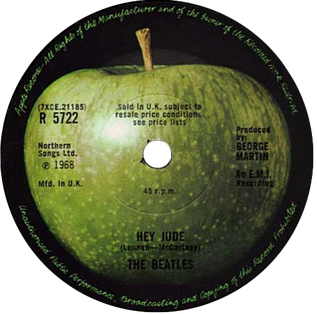
"Hey Jude" is a song by the English rock band the Beatles that was released as a non-album single in August 1968. It was written by Paul McCartney and credited to the Lennon–McCartney partnership. The single was the Beatles' first release on their Apple record label and one of the "First Four" singles by Apple's roster of artists, marking the label's public launch. "Hey Jude" was a number-one hit in many countries around the world and became the year's top-selling single in the UK, the US, Australia and Canada. Its nine-week run at number one on the Billboard Hot 100 tied the all-time record in 1968 for the longest run at the top of the US charts, a record it held for nine years. It has sold approximately eight million copies and is frequently included on music critics' lists of the greatest songs of all time.

A Hard Day's Night is a 1964 musical comedy film starring the English rock band the Beatles—John Lennon, Paul McCartney, George Harrison and Ringo Starr—during the height of Beatlemania. Directed by Richard Lester, it was written by Alun Owen and originally released by United Artists. The film portrays 36 hours in the lives of the group as they prepare for a television performance.

Apple Corps Limited is a multi-armed multimedia corporation founded in London in January 1968 by the members of The Beatles to replace their earlier company and to form a conglomerate. The name is a pun for its pronunciation "apple core". Its chief division is Apple Records, which was launched in the same year. Other divisions included Apple Electronics, Apple Films, Apple Publishing and Apple Retail, whose most notable venture was the short-lived Apple Boutique, on the corner of Baker Street and Paddington Street in central London. Apple's headquarters in the late 1960s was at the upper floors of 94 Baker Street, after that at 95 Wigmore Street, and subsequently at 3 Savile Row. The last of these addresses was also known as the Apple Building, which was home to the Apple studio.

"Rain" is a song by the English rock band the Beatles, released on 30 May 1966 as the B-side of their "Paperback Writer" single. Both songs were recorded during the sessions for Revolver, although neither appear on that album. "Rain" was written by John Lennon and credited to the Lennon–McCartney partnership. He described its meaning as "about people moaning about the weather all the time".

"Two of Us" is a 1969 song written by Paul McCartney and credited to the Lennon–McCartney partnership. The song was recorded by the Beatles on 31 January 1969.
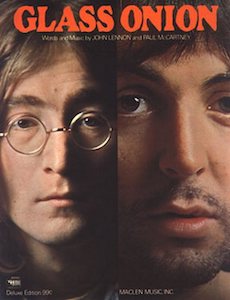
"Glass Onion" is a song by the English rock band the Beatles from their 1968 double album The Beatles. The song was written by John Lennon and credited to Lennon–McCartney.

"Why Don't We Do It in the Road?" is a song by the English rock band the Beatles, released on their 1968 double album The Beatles. Short and simple, it was written and sung by Paul McCartney, but credited to Lennon–McCartney. At 1:42, "Why Don't We Do It in the Road?" comprises 34 bars of a twelve-bar blues idiom. It begins with three different percussion elements and features McCartney's increasingly raucous vocal repeating a simple lyric with only two different lines.
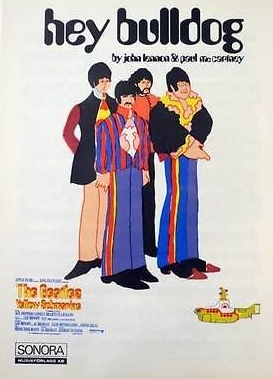
"Hey Bulldog" is a song by the English rock band the Beatles released on their 1969 soundtrack album Yellow Submarine. Credited to Lennon–McCartney, but written primarily by John Lennon, it was finished in the recording studio by both Lennon and Paul McCartney. The song was recorded during the filming of the "Lady Madonna" promotional film, and, with "Lady Madonna", is one of the few Beatles songs based on a piano riff.
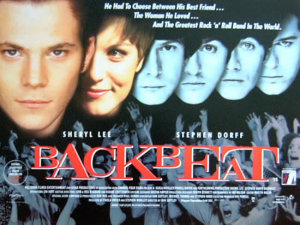
Backbeat is a 1994 independent drama film directed by Iain Softley. It chronicles the early days of the Beatles in Hamburg, Germany. The film focuses primarily on the relationship between Stuart Sutcliffe and John Lennon, and also with Sutcliffe's German girlfriend Astrid Kirchherr. It has subsequently been made into a stage production.

"Don't Let Me Down" is a song by the English rock band the Beatles, recorded in 1969 during the Let It Be sessions. It was written by John Lennon and credited to the Lennon–McCartney songwriting partnership. The band recorded the song with keyboardist Billy Preston; the single release with "Get Back" was credited to "the Beatles with Billy Preston". Originally released as a B-side, producer Phil Spector excluded the song from Let It Be. The song's first appearance on an album was on the 1970 collection Hey Jude.

Magical Mystery Tour is a 1967 British made-for-television musical film written, produced, and directed by and starring the Beatles. It is the third film that starred the band and depicts a group of people on a coach tour who experience strange happenings caused by magicians. The premise was inspired by Ken Kesey's Furthur adventures with the Merry Pranksters and the then-popular coach trips from Liverpool to see the Blackpool Lights. Paul McCartney is credited with conceptualising and leading the project.

Let It Be is a 1970 British documentary film starring the Beatles and directed by Michael Lindsay-Hogg. The film documents the group's rehearsing and recording songs in January 1969 for what was to become their twelfth and final studio album Let It Be. The film includes an unannounced rooftop concert by the group, the last public performance of the four together.
Sir Michael Edward Lindsay-Hogg, 5th Baronet is an American-born television, film, music video, and theatre director. Beginning his career in British television, Lindsay-Hogg became a pioneer in music film production, directing promotional films for the Beatles and the Rolling Stones. Following his work with these bands, he branched out into film and theatre, while still maintaining successful careers in television and music video production.
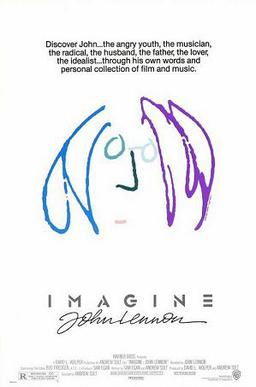
Imagine: John Lennon is a 1988 documentary film about English musician John Lennon. It was released on 7 October 1988, two days before Lennon's 48th birthday.
"Here Today" is a song by Paul McCartney from his 1982 album Tug of War. He wrote the song as a tribute to his relationship with John Lennon, who was murdered in 1980. He stated the song was composed in the form of an imaginary conversation the pair might have had. The song was produced by the Beatles' producer George Martin. Although not released as a single, the song reached No. 46 on the Billboard Mainstream Rock charts.

In His Life: The John Lennon Story is a 2000 American made-for-television biographical film about John Lennon's teenage years, written by the film's executive producer, Michael O'Hara, and directed by David Carson.
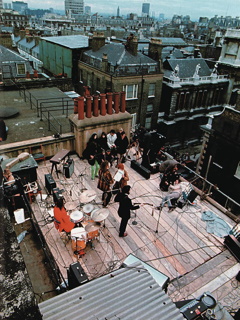
On 30 January 1969, the Beatles performed an impromptu concert from the rooftop of their Apple Corps headquarters at 3 Savile Row, in central London's office and fashion district. Joined by guest keyboardist Billy Preston, the band played a 42-minute set before the Metropolitan Police arrived and ordered them to reduce the volume. It was the final public performance of their career. They performed nine takes of five new songs as crowds of onlookers, many on lunch breaks, congregated in the streets and on the rooftops of nearby buildings to listen. The concert ended with "Get Back", and John Lennon joking, "I'd like to say thank you on behalf of the group and ourselves, and I hope we've passed the audition."

The Beatles: Get Back is a 2021 documentary series directed and produced by Peter Jackson. It covers the making of the Beatles' 1970 album Let It Be and draws largely from unused footage and audio material originally captured for and recycled original footage from the 1970 documentary of the album by Michael Lindsay-Hogg. The docuseries has a total runtime of nearly eight hours, consisting of three episodes, each of duration between two and three hours covering about one week each, together covering 21 days of studio time.
















